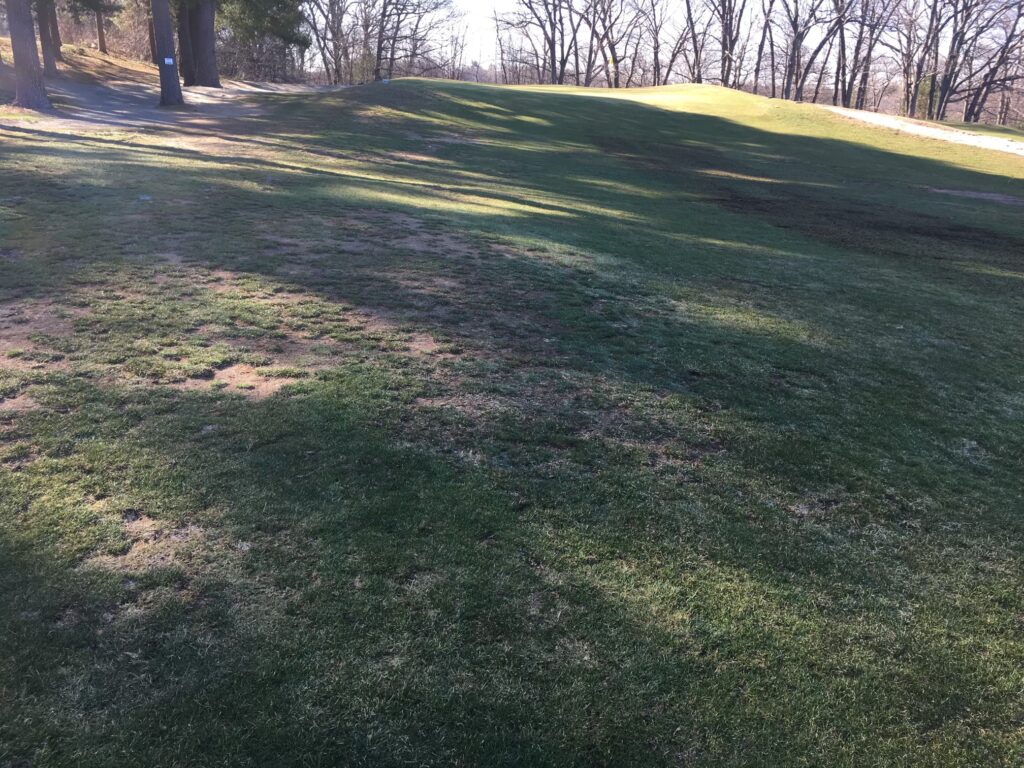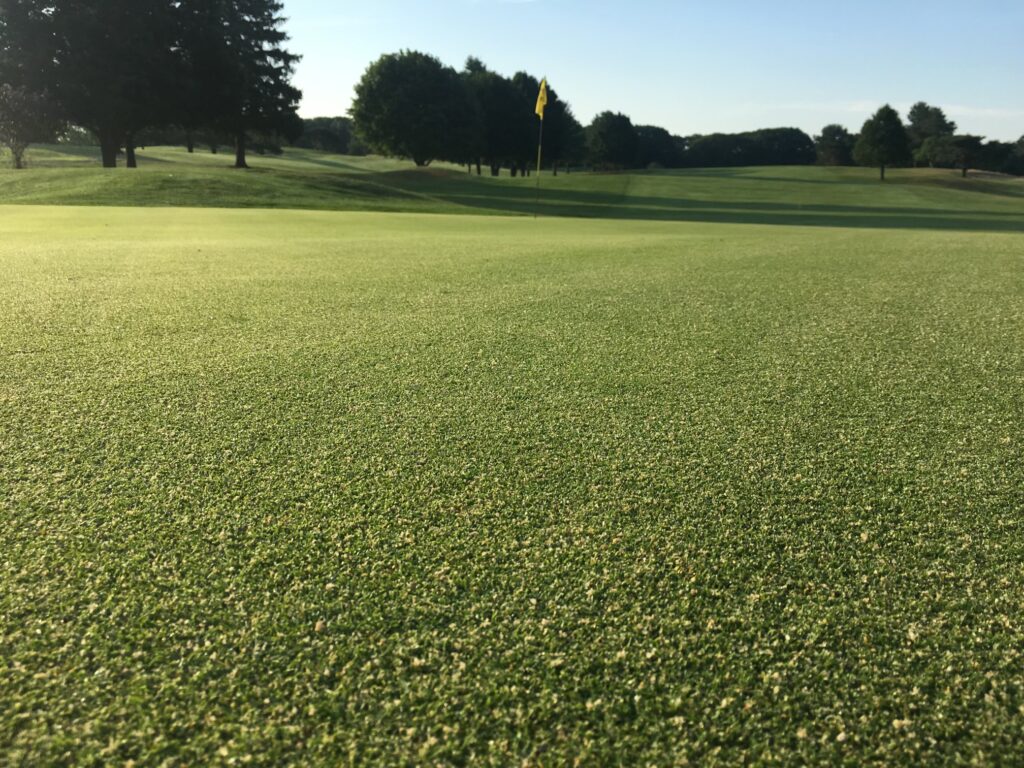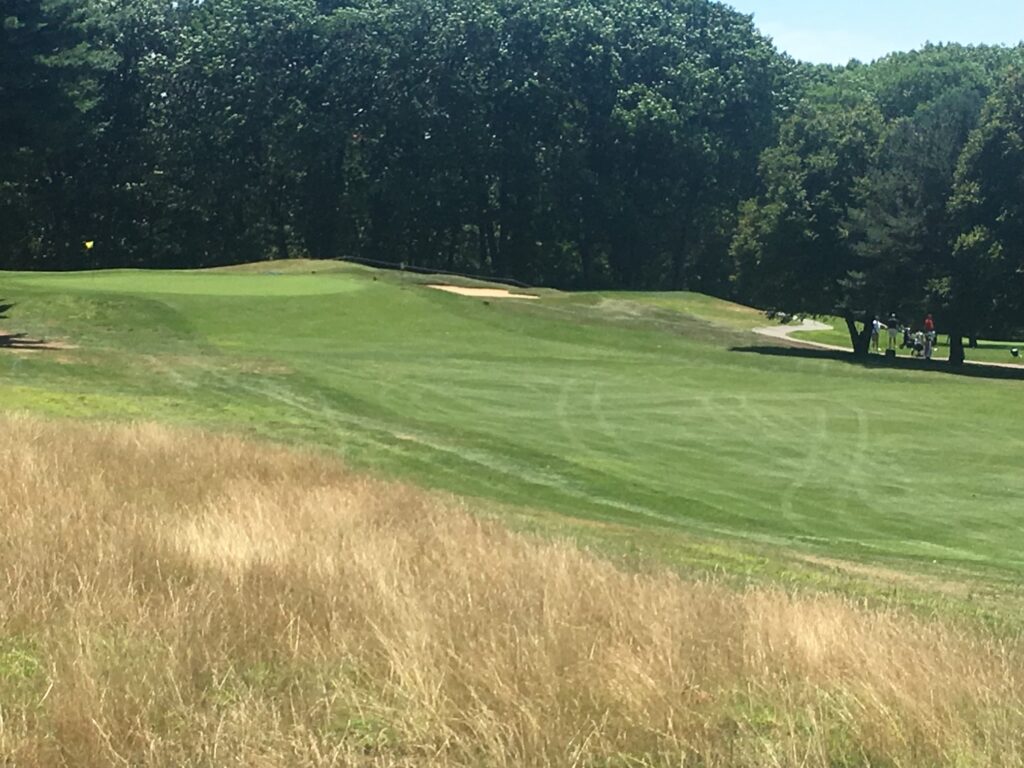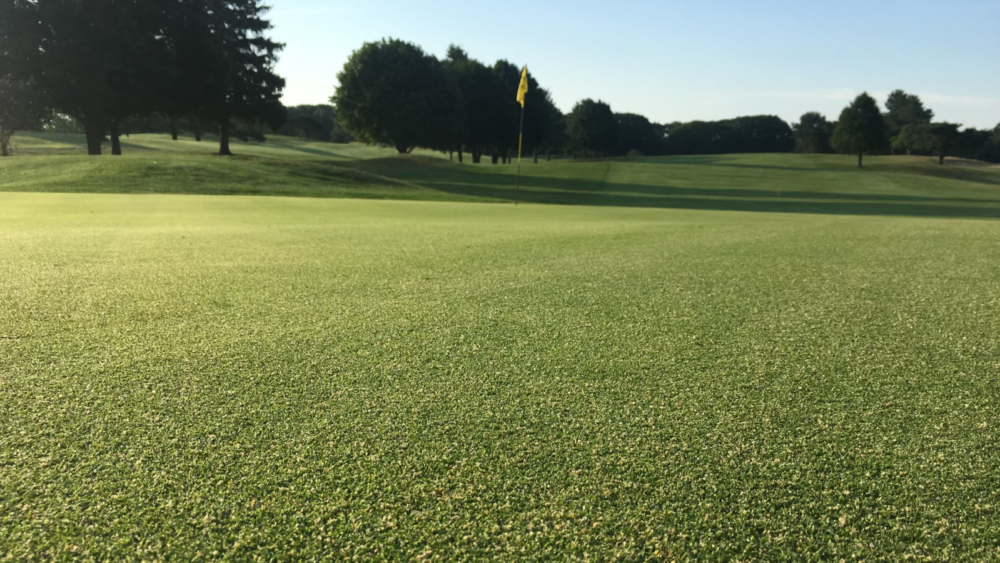By Pat Jones| Patrick Van Vleck used old-school cultivation practices and a Redox-driven fertility program to turn the turf around at unique Massachusetts municipal.
Patrick Van Vleck’s high school guidance counselor was stumped when he asked her about schools that taught golf course management, but she eventually pointed him towards SUNY Delhi and a turf career was born. He credits an early position at Irondequoit CC with spurring his commitment to the profession:

“I learned how much I didn’t know. And how to behave. And how vast the industry is. My passion came right out of the gate.”
It was just three years ago that he became the superintendent at Stoneham Oaks/Unicorn, which is part of Sterling Golf Management group. The municipally owned facility, originally designed in the 1920s by Stiles and Van Kleek, had suffered from a lack of attention for years but had just installed a new irrigation system. It simply needed grass. “When I took over there was a lot of bare turf. It hadn’t been well-loved,” says Van Vleck. “We had lots of shade issues as well, but there was a new irrigation system so expectations were high.”

I talked with Van Vleck about how he’s met those expectations by bringing healthy turf back to life on his course using a combination of cultural practices and a pleasantly cost-effective fertility program consisting of Redox products and other microbials.
Where did you start when you came here in 2018?
We put an emphasis on cultural programs, soil testing, liming on fairways, etc. I’m a big ‘feed the soil’ type guy and I don’t use a lot of synthetic fertilizer if I don’t have to. My goal was to get my golf course soils to work for me so I can use fewer inputs. So we focused on that right away too.
Describe the change over three years.
We have more uniform coverage on fairways/tees, firmer greens, better roll and faster greens for sure. Our ability to recover from play, particularly on our tees on Unicorn, is also a lot better. Some of the biggest feedback (from golfers) has been how much better the tees are as well as overall turf quality. And obviously the improvement in the greens really gets noticed.


How did you choose this combination of Redox and EarthWorks you’ve employed here?
I’ve been using Earthworks and Redox off and on since 2008 when I was working with Tom Irwin Inc. here in our area. When I came to Unicorn I felt like it was the right program if we could afford it. We’re a municipal so we really need to watch our pennies. However, with what we were facing, I felt like these products would give us the best chance of long-term success.
How do you make that work?
I do a lot of math comparing products. I’m not necessarily looking at the price of the jug, I’m looking at the value I’m going to get out of the jug. Redox (TurfRx) can be a bit pricey, but when I compare it to other similar approaches – in an oranges to oranges way – the percentage of material in that jug makes it pay off.
What makes Redox products different?
It’s definitely because of the way it’s formulated. TurfRx Fairway+ has like 12% soluble potash vs. 7% for something similar. If you ever lift a jug of Redox, you’re like ‘holy crap this weighs a ton’. There’s no filler. It’s dense, there’s a lot of stuff in there and it’s all doing something. The amount of soluble carbon it gives the turf is really important too.
Also, you have lower use rates so you get more legs out of it. A case of TurfRx Micro+ will last me a season because of the rate and the frequency I spray.
How do you build your overall plan?
I work with Greg Cormier from Tom Irwin Inc. to put my agronomic plan together and then pick my ‘must-have’ backbone products. I know I want Redox (TurfRx), Earthworks, and then a couple of brand-name fungicides. Those are my sleep-at-night products. The rest are more price-based decisions.
How do you work with Greg?
He and I sit down and talk about the goals for the season and what kind of turf we want to have. We kind of make products in some cases. It helps that Greg was a superintendent because he sees what we see. His whole mission is to help us achieve our goals, big and small, and figure out the right tools to make it happen. We’ll walk around the property and assess everything periodically and we keep in touch about the next spray or two. We also talk a lot about cultural practices.
What’s helped from a cultural standpoint?
We’ve gotten pretty aggressive with our aerification program. We aerify greens a couple times a year and verticut quite a bit. The biggest difference has been aerification of fairways. We’re pulling cores with ¾” tines and spreading seed behind. In super-thin areas we hit them by hand. It’s made a huge difference in combination with the fertility program.
Which Redox products do you go to most?
My biweekly greens spray includes TurfRx Fairway+ and several TurfRx minors. It’s just a little nitrogen plus the minors it needs. I spoon-feed with 46-0-0 so that’s why I’m adding the rest. I also use TurfRx P+ for my rinse-ins and I do a heavy dose of it around both spring and fall aerification to help with additional rooting and recovery.
What’s the desired long-term outcome?
It’s all about getting the soils to work for me. I see the difference in the turf when it’s on Redox (TurfRx) and when it’s not, for sure. The turf handles drought stress better and handles play better. As we’ve implemented these products more and more over the past two years, you can just see the strength in the turf growing.
Is it complicated to use?
Not at all. One of the great things about working with Greg is we build our program planner in the order that I actually mix the products. It’s in order for a reason to make sure everything interacts properly. That planner is really valuable to me.
Final thoughts about Redox? Why is it in that must-have category despite your budget limitations?
Results. The products produce results. It just works, particularly when paired with other microbials. We’re in a results-driven business and it delivers. It’s that simple.


Comments are closed.